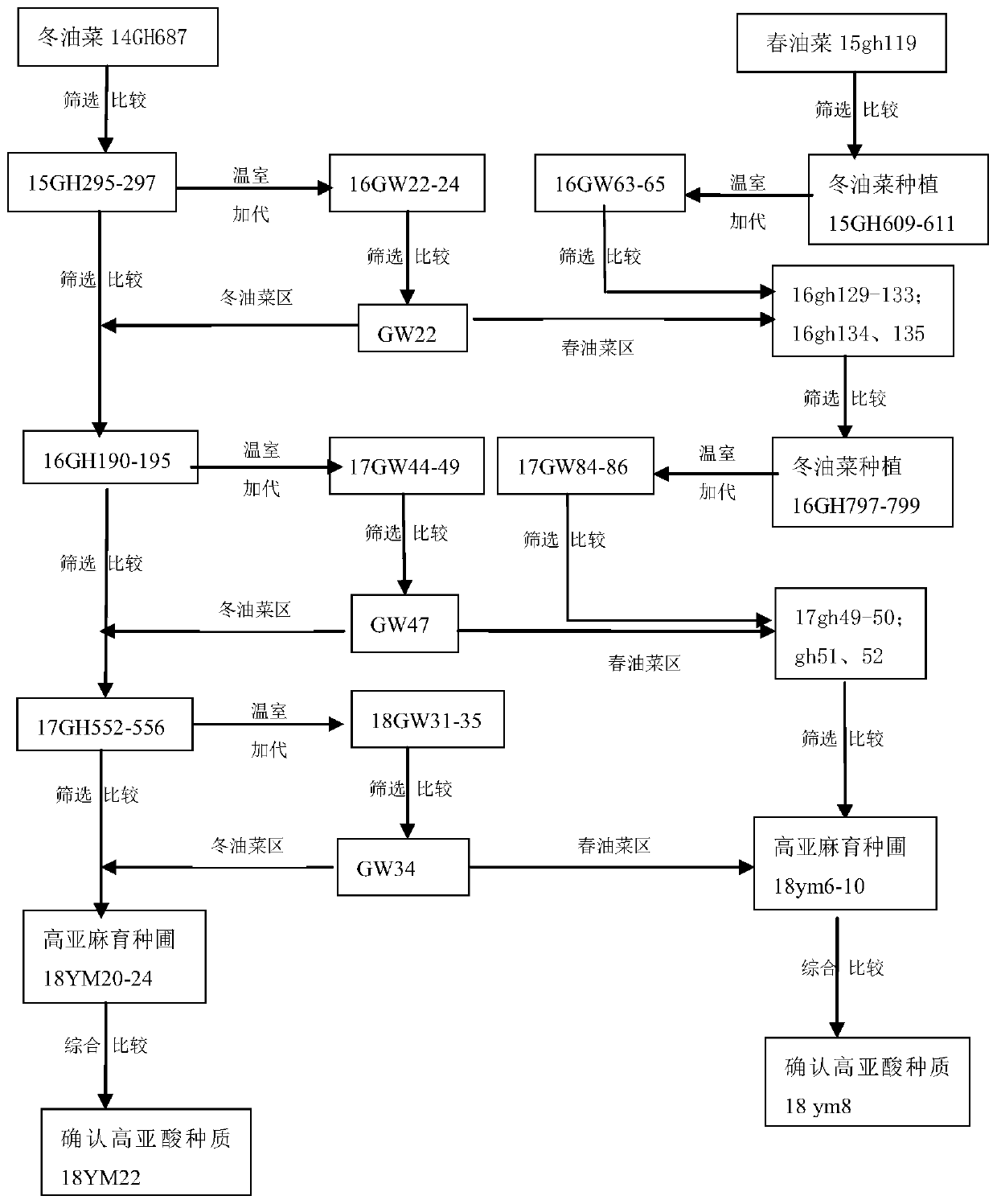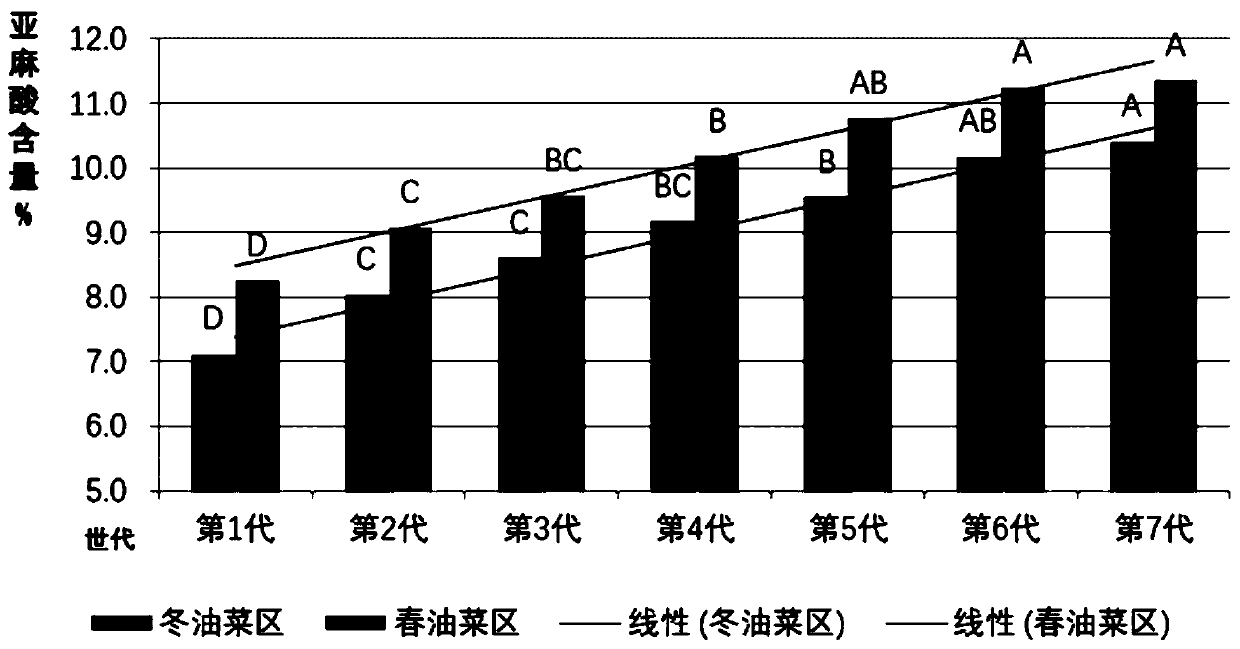Method for efficiently screening high linolenic acid germplasm of brassica napus
A technology of brassica napus and linolenic acid, which is applied in the fields of crop genetics and breeding and agricultural applications, can solve the problems of low linolenic acid content, low seed setting rate, and only "two years and one ripening", so as to increase the content of linolenic acid and achieve results Accurate and reliable, the effect of shortening the breeding cycle
- Summary
- Abstract
- Description
- Claims
- Application Information
AI Technical Summary
Problems solved by technology
Method used
Image
Examples
Embodiment 1
[0104] Embodiment 1: as figure 2 , the breeding process of rapeseed high linolenic acid germplasm "Chunshan 2B / 9905" (quoted from 11Cy1063):
[0105] 1. Screening of winter rapeseed area: screening for linolenic acid content of No. 14GH687. The method is:
[0106] 1.1 Field primary selection: 1) Plant 4 rows (80-100 plants) of each material in the winter rape area (Yangling) in 2014; (2015) select 10-15 uniform individual plants for self-bagging at the flowering stage, When mature, select disease-free self-bred individual plants to harvest; at the same time, select 10-15 normal mature individual plants. 2) Threshing, weighing, and laboratory analysis of the harvested self-crossed and selected plants. 3) According to the test analysis results, select the linolenic acid content > 11.5%, the oil content > 45%, the yield per plant > 20g, the linolenic acid output per plant > 1.05g, linoleic acid + linolenic acid > 35%, linoleic acid The three excellent ones with acid / linoleni...
Embodiment 2
[0137] Example 2 The overall linolenic acid content of rapeseed germplasm resources is significantly improved
[0138] 1. The average linolenic acid content of rapeseed germplasm increased significantly: from image 3 It can be seen that the mean value of linolenic acid content in rapeseed germplasm gradually increased during the screening process; after 7 consecutive generations of screening, the mean value of linolenic acid content in rapeseed germplasm increased significantly; The average linolenic acid content of rapeseed germplasm in the region increased from 7.21%±1.05% to 10.41%±1.44%, an increase of 3.29 percentage points, that is, the average value increased by 46.21%. The average linolenic acid content of rapeseed germplasm in the spring rapeseed area increased from 8.26%±1.45% to 11.36%±1.63%, an increase of 3.10 percentage points, that is, the average value increased by 37.53%.
[0139] 2. The percentage rate of germplasm with higher linolenic acid content increas...
PUM
 Login to View More
Login to View More Abstract
Description
Claims
Application Information
 Login to View More
Login to View More - R&D
- Intellectual Property
- Life Sciences
- Materials
- Tech Scout
- Unparalleled Data Quality
- Higher Quality Content
- 60% Fewer Hallucinations
Browse by: Latest US Patents, China's latest patents, Technical Efficacy Thesaurus, Application Domain, Technology Topic, Popular Technical Reports.
© 2025 PatSnap. All rights reserved.Legal|Privacy policy|Modern Slavery Act Transparency Statement|Sitemap|About US| Contact US: help@patsnap.com



